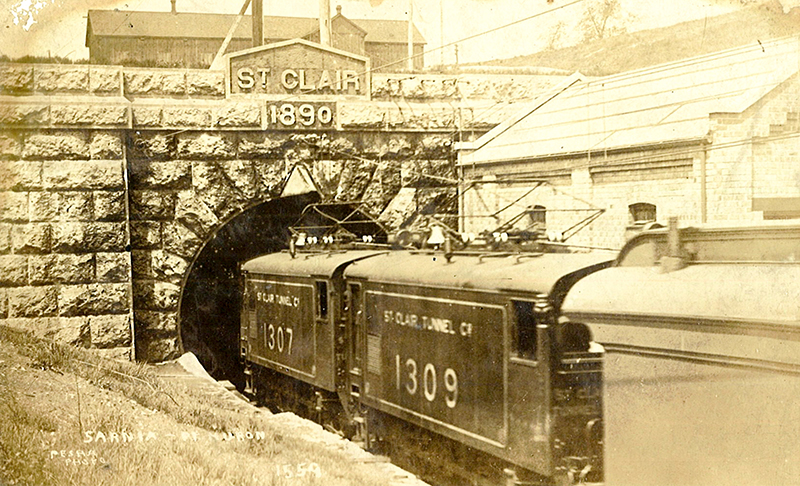By 1902 there had already been multiple deaths by asphyxiation in the St. Clair River Tunnel.
In the early days of the tunnel’s existence, before electric-powered trains moved people and goods beneath the St. Clair River, deadly fumes from coal-burning locomotives were a life-threatening hazard for railway workers.
In 1892, just a year after the tunnel opened, a conductor lost his life when a train accidentally uncoupled inside. And in 1897 three more — a conductor, engineer and a brakeman — died when another train uncoupled 200 feet inside the tunnel’s Canadian entrance.
But in 1902, 20 men came perilously close to becoming victims in what would have been the worst mass disaster in the town’s history.
Thirty-five workers in all were labouring in the tunnel that fateful Wednesday evening on June 18. Three bridge gangs and a track crew had worked all day and were returning at 7 p.m. for another two-hour shift of repairing and replacing track.
Most of the rail crew were from Sarnia, with others from Mandaumin, Point Edward and Watford plus a pair from Hamilton. They were about 800 yards from the American portal when, after working for nearly an hour, they began falling ill from tunnel fumes.
The Toronto Express had passed through the tunnel just minutes before the work crew returned from suppers to begin their second shifts. As some of the men began to lose consciousness and fall where they stood, others ran for help. By the time emergency responders arrived on scene 20 men had collapsed, overcome by the poisonous fumes.
A race against time ensued as the stricken workers were rushed to fresh air outside. Some were deemed to be in critical condition by then.
All were eventually resuscitated as their lungs ventilated with clean air, but it had nearly been a mass disaster.
The rescue crew was credited with avoiding catastrophe, and doctors treating the men said they didn’t expect any permanent ill effects.
The introduction of electric locomotives in 1908 led to better air quality, and the last of the steam-powered engines passed through the tunnel in the late 1950s, to be replaced by cleaner-burning diesel engines.
The old tunnel, which was declared a U.S. National Historic Landmark in 1993, was closed and replaced with the current larger rail tunnel the following year.


